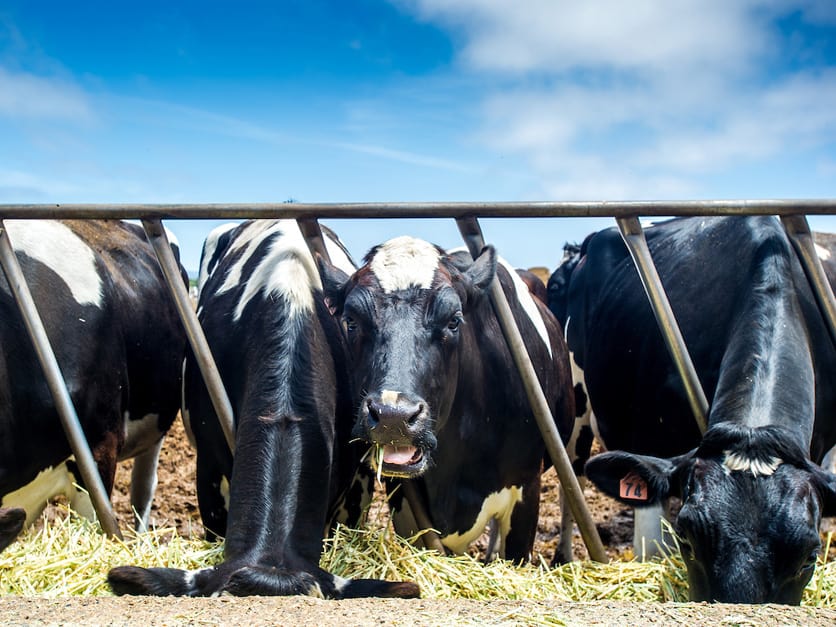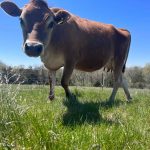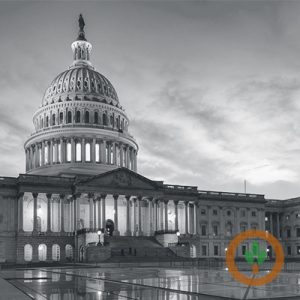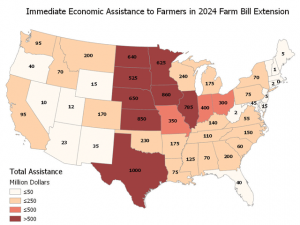
The commodities expected to see significantly higher payments over the next 10 years than previously estimated include cotton and dairy.
CBO’s new farm program baseline, released Friday, now estimates that commodity program payments, including livestock disaster aid, will total $66 billion from 2024 through 2033, up from the $56.7 billion forecast in February for the 10-year period.
The 10-year cost of the Dairy Margin Coverage program alone is now estimated at $3.25 billion, up from $2.3 billion in the February forecast.
Cotton growers are now expected to receive $5.4 billion in payments over the 10-year period, up from the $3.6 projected in February.
Corn growers are expected to get the largest share of payments, $24.7 billion, an increase of about $600 million over the February forecast. Payments for soybean and wheat also are forecast somewhat higher.
The estimated 10-year cost of livestock disaster assistance has nearly doubled since the previous forecast to $10.9 billion.
The CBO baseline will be critical to development of a new farm bill, because the cost estimates set limits on how much lawmakers can spend without shifting money between programs or obtaining resources from outside the farm bill.
The higher cost estimate for the Dairy Margin Coverage would likely increase the cost of modifying the program or increasing the Price Loss Coverage reference price for cotton growers, said Patrick Westhoff, who directs the Food and Agricultural Policy Research Institute at the University of Missouri.
“The other crops are a mixed bag, and it may well be that technical revisions may have a bigger impact on how proposals might be scored than will the price changes alone. However, it does appear unlikely that the revised CBO baseline will greatly reduce the CBO scores associated with raising reference prices, as some had hoped,” he said in an email.
CBO appears to have made technical revisions in its estimates of seed cotton prices since the February forecast, said Westhoff. PLC payments to cotton growers are triggered when the price of seed cotton falls below 36.7 cents a pound. Seed cotton prices are estimated lower in the latest forecast than they were in February.
CBO also sharply raised its estimate of Supplemental Nutrition Assistance Program benefits this year because of increased participation and higher average benefits. CBO now expects SNAP to cost $145 billion this year, up from the $125.4 billion projected in February. CBO estimates that monthly participation in SNAP will average 42.3 million this year, up a million people from the February estimate.
Some 42.5 million people were enrolled in SNAP in February, according to the latest USDA data.
Westhoff noted that CBO’s updated baseline continues to project that USDA will use its Commodity Credit Corp. authority to spend about $1 billion a year for reasons that aren’t specified. House Ag Committee Chairman Glenn “GT” Thompson, R-Pa., has suggested limiting the CCC authority to generate savings.
Agri-Pulse is hosting a webinar Monday on the status of the next farm bill with John Newton, chief economist for the Senate Ag Committee’s minority staff, and Jacqlyn Schneider, a former top Democratic staffer on the panel. The discussion will cover a wide variety of issues, including the CBO baseline update. Sign up for the webinar here.

























